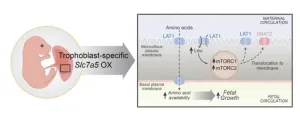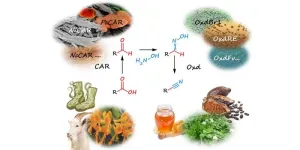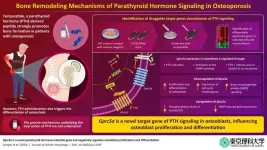Renal tumor pathology has evolved considerably, expanding from two main types of renal malignant tumors to over 20 distinct types. Diagnostic criteria have advanced from purely morphological features to include histochemistry, immunohistochemistry (IHC), and molecular genetics. The World Health Organization (WHO) and the International Society of Urologic Pathology (ISUP) have been instrumental in updating these criteria, resulting in a comprehensive framework essential for accurate diagnosis, effective treatment, and improved patient outcomes.
The field of renal tumor pathology has undergone significant advancements, particularly with the introduction of new molecular data and treatment approaches. The 2022 WHO classification of kidney epithelial tumors reflects these advancements with major updates from the previous 2016 classification. This review outlines the diagnostic updates and major changes in the classification of kidney epithelial tumors, emphasizing the rationale behind these changes.
Despite the rise of molecular techniques, morphological and cytological features remain the cornerstone of renal tumor classification. The 2022 WHO classification reflects this by continuing to prioritize morphological criteria while incorporating molecular genetics for more precise diagnostics. This dual approach ensures both traditional and modern diagnostic methods are utilized, providing a comprehensive understanding of renal tumors.
The 2022 classification reorganizes renal epithelial tumors hierarchically, starting with benign tumors followed by malignant ones. This new structure aligns with a unified approach across all WHO Blue Books. Tumors are categorized based on their morphological and cytological features into clear cell renal tumors, papillary renal tumors, oncocytic and chromophobe renal tumors, collecting duct tumors, other renal tumors, and molecularly defined renal carcinomas. This organization streamlines the diagnostic process and enhances clarity in tumor classification.
Significant changes have been made to the classification of established renal tumors:
Papillary Renal Cell Carcinoma (PRCC): The subtyping into type 1 and type 2 has been abolished. Classic PRCC now encompasses tumors previously classified as type 1, while type 2 tumors have been reclassified into other categories. This change addresses overlapping features and biological behaviors, simplifying diagnosis.
Clear Cell Papillary Renal Cell Tumor (CCPRCT): Previously known as clear cell PRCC, this tumor has been renamed due to its consistently indolent behavior, distinguishing it from more aggressive tumors and ensuring appropriate management.
Chromophobe Renal Cell Carcinoma (ChRCC): Recognizes non-conventional morphologies and introduces "other oncocytic tumors" for tumors with mixed features, aiding in accurate diagnosis and treatment planning.
RCC-Not Otherwise Specified (RCC-NOS): Replaces the term RCC-Unclassified for tumors that do not fit into other categories, reflecting a more precise approach to categorizing renal tumors.
A new category for molecularly defined tumors has been established, reflecting advancements in molecular diagnostics. This includes tumors with specific genetic alterations, such as TFE3-rearranged RCCs, TFEB-altered RCC, and ELOC-mutated RCC. These tumors require molecular tests for definitive diagnosis, highlighting the integration of molecular genetics in modern pathology.
The 2022 WHO classification has significant clinical and diagnostic implications. By integrating molecular data with traditional histopathological criteria, it provides a nuanced and precise framework for diagnosing renal tumors. This integration facilitates accurate prognostication and personalized treatment strategies, improving patient outcomes. The updated classification underscores the need for pathologists and clinicians to stay current with advancements in molecular diagnostics and their clinical implications.
The 2022 WHO classification of kidney epithelial tumors marks a significant advancement in renal tumor pathology. By incorporating both traditional morphological criteria and modern molecular data, the classification provides a comprehensive framework for the diagnosis, classification, and management of renal tumors. This evolution paves the way for precision medicine, offering more tailored and effective treatment options for patients. The ongoing updates in renal tumor classification reflect the dynamic nature of the field, emphasizing the continuous need for research and adaptation in pathology to enhance patient care.
Adopting these new classifications requires ongoing education and adaptation among healthcare providers. Future research should focus on refining these classifications and exploring the clinical implications of newly identified molecular subtypes. As the field progresses, the integration of novel diagnostic tools and therapies will continue to transform renal tumor pathology, underscoring the importance of a multidisciplinary approach in managing kidney cancer.
Full text
https://www.xiahepublishing.com/2771-165X/JCTP-2024-00002
The study was recently published in the Journal of Clinical and Translational Pathology.
Journal of Clinical and Translational Pathology (JCTP) is the official scientific journal of the Chinese American Pathologists Association (CAPA). It publishes high quality peer-reviewed original research, reviews, perspectives, commentaries, and letters that are pertinent to clinical and translational pathology, including but not limited to anatomic pathology and clinical pathology. Basic scientific research on pathogenesis of diseases as well as application of pathology-related diagnostic techniques or methodologies also fit the scope of the JCTP.
Follow us on X: @xiahepublishing
Follow us on LinkedIn: Xia & He Publishing Inc.
END






